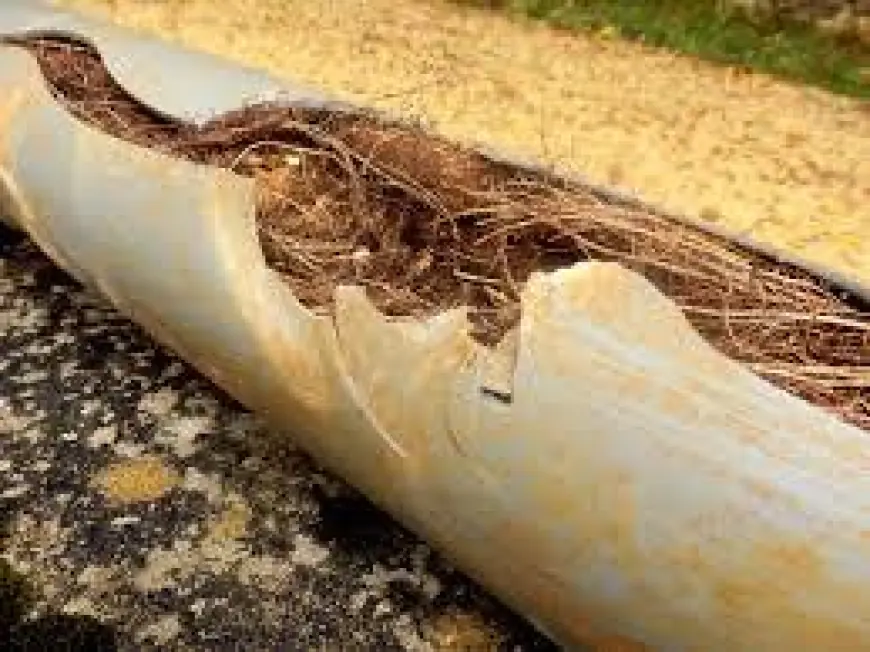Tree Root Ingress Loughborough: Causes, Effects, and Effective Solutions
In this article, we will explore the causes, risks, and effective solutions to prevent and manage tree root ingress Loughborough.

Tree root ingress is an issue that many homeowners and property managers in Loughborough may encounter. This problem arises when tree roots invade underground pipes, sewers, and drains, causing significant damage and disruption. Tree root ingress is not only a frustrating problem to deal with, but it can also lead to costly repairs if left unchecked. In this article, we will explore the causes, risks, and effective solutions to prevent and manage tree root ingress Loughborough.
What is Tree Root Ingress?
Tree root ingress refers to the process by which tree roots penetrate and grow into underground pipes, drainage systems, and sewers. This happens when the roots search for water and nutrients, often infiltrating pipes that are damaged, cracked, or have joints that are not sealed properly. Once inside, tree roots continue to grow, causing blockages, leaks, and potentially severe damage to plumbing systems.
In Loughborough, where there are many older properties with mature trees and established drainage systems, tree root ingress is a relatively common problem. As tree roots naturally seek out moisture and nutrients, they can become attracted to the water in the pipes. Over time, this invasion can result in significant issues, including blocked drains, reduced water flow, and structural damage to the pipes themselves.
Causes of Tree Root Ingress
Several factors contribute to tree root ingress, and understanding these causes is key to preventing and managing the problem effectively.
1. Proximity of Trees to Underground Pipes
One of the main causes of tree root ingress is the proximity of trees to underground pipes and drainage systems. If a tree is planted too close to a drainage line, its roots will naturally be drawn towards the moisture inside the pipe. This is particularly problematic with larger trees, as their roots grow extensively and can easily reach plumbing systems that are close to the surface.
2. Aging and Deteriorating Pipes
Many properties in Loughborough, especially older homes, may have plumbing systems made of older materials such as clay pipes. These pipes are prone to cracking and deteriorating over time. Even small cracks or joints that are not tightly sealed can provide an entry point for tree roots. Once a root infiltrates the pipe, it can quickly cause more damage as it continues to grow, eventually leading to severe blockages.
3. Soil Moisture and Drainage Issues
Another factor that increases the likelihood of tree root ingress is poor drainage and excess moisture in the soil. When water collects around pipes due to drainage issues or poor soil conditions, it creates an ideal environment for tree roots to grow towards the pipes. In Loughborough, areas with heavy clay soil or poor drainage systems are especially prone to this issue.
4. Aggressive Root Systems of Certain Tree Species
Some tree species are particularly aggressive in their root growth, which can increase the chances of root ingress. Trees such as willows, poplars, and sycamores are known for having invasive root systems that seek out water sources aggressively. Even if these trees are planted far from plumbing systems, their roots can grow large enough to reach and penetrate pipes.
Risks of Tree Root Ingress
Tree root ingress can cause a range of serious problems, some of which can be costly and difficult to repair. Here are the primary risks associated with this issue:
1. Blocked Drains and Sewers
One of the most common effects of tree root ingress is blocked drains. As tree roots infiltrate pipes, they can cause blockages that slow down or completely stop the flow of water and waste. Blockages in drains can lead to unpleasant odors, slow draining sinks, or even wastewater backing up into the property, which can be a major inconvenience and health hazard.
2. Structural Damage to Pipes and Foundations
As roots continue to grow inside pipes, they can cause extensive damage. The pressure exerted by expanding roots can crack and distort pipes, leading to leaks and weakened structural integrity. This can eventually cause the pipes to collapse or break, requiring expensive repairs. In some cases, the roots can also exert pressure on the property’s foundation, leading to cracks and potential subsidence.
3. Flooding and Water Damage
If tree roots cause significant blockages in the drainage system, it can lead to water backups. In severe cases, this can result in flooding within the home or surrounding areas. Flooding can cause significant water damage to floors, walls, and personal belongings, as well as encourage the growth of mold and mildew, which can be harmful to health.
4. Health Hazards from Contaminated Water
If tree root ingress leads to blocked sewage systems, it may result in the contamination of drinking water or create stagnant pools of waste water. This increases the risk of exposure to harmful bacteria and viruses, posing a health risk to the property’s occupants. Mold and damp conditions caused by water leaks can also lead to respiratory problems, especially for individuals with allergies or asthma.
5. Increased Repair and Maintenance Costs
Tree root ingress can lead to expensive repairs if left untreated. The costs of removing roots, replacing pipes, or repairing the foundation can add up quickly. In addition to the direct financial costs, the disruption to daily life during the repair process can cause stress and inconvenience for homeowners.
How to Prevent Tree Root Ingress
Preventing tree root ingress in Loughborough is not only about addressing the problem once it arises, but also about taking proactive measures to avoid the issue in the first place. Here are several ways to reduce the risk of tree root ingress:
1. Plant Trees at a Safe Distance
The best way to prevent tree root ingress is to plant trees at a safe distance from underground pipes, sewers, and drains. As a general rule, trees should be planted at least 10 to 15 feet away from any plumbing systems. The exact distance will depend on the type of tree, as some species have more extensive root systems than others. If you are planting a tree near plumbing, consider choosing species that have less invasive root systems, such as ornamental trees or smaller fruit trees.
2. Regular Inspection and Maintenance of Plumbing Systems
Regular maintenance and inspections of your plumbing systems are essential for identifying any weaknesses or potential issues before they become severe. Inspecting pipes for cracks or signs of leaks, especially in older homes with clay or cast-iron pipes, can help detect tree root ingress early on. Addressing minor issues before they escalate into major problems can save both time and money in the long run.
3. Use Root Barriers
If you have trees near your plumbing systems, installing root barriers can be an effective preventative measure. Root barriers are physical or chemical barriers placed in the ground to prevent tree roots from growing towards pipes. These barriers create a protective shield that blocks root penetration, reducing the risk of root ingress. Root barriers can be installed around the perimeter of the tree’s root zone or along the pipes to keep roots from reaching your plumbing system.
4. Prune Tree Roots Regularly
If a tree has already been planted near your plumbing system, regular root pruning can help maintain control over the root growth. Professional arborists can safely trim back any invasive roots that may be approaching your pipes. However, it’s important to ensure that root pruning doesn’t damage the overall health of the tree.
5. Upgrade or Reline Old Pipes
For older properties in Loughborough, upgrading or relining old pipes can be an effective way to prevent tree root ingress. Trenchless technology allows for the installation of new, root-resistant pipes without the need for disruptive excavation. Relining existing pipes with a durable, seamless liner can also prevent tree roots from infiltrating the system.
Solutions for Existing Tree Root Ingress in Loughborough
If you are already experiencing tree root ingress, there are several solutions available to resolve the issue:
1. Root Removal
Removing the roots from the affected pipes is the first step in dealing with tree root ingress. This can be done using mechanical methods, such as high-pressure water jetting or cutting tools, to clear the roots from the pipes. In some cases, chemical treatments may be used to break down the roots, although these should be applied carefully to avoid damaging the tree or the surrounding environment.
2. Pipe Relining
Pipe relining is a modern solution that involves inserting a new, durable lining inside the existing pipes. This relining process creates a smooth, seamless surface that prevents future root intrusion and strengthens the pipe. Pipe relining is a less invasive and more cost-effective alternative to traditional pipe replacement.
3. Tree Removal
In extreme cases where tree root ingress is causing extensive damage, it may be necessary to remove the tree. While this should be considered a last resort, removing the tree entirely can eliminate the source of the root problem. Consult with an arborist to determine whether tree removal is the most appropriate solution.
Conclusion
Tree root ingress is a common and potentially damaging problem in Loughborough, particularly in areas with mature trees and older plumbing systems. Understanding the causes, risks, and preventive measures can help homeowners avoid costly repairs and protect their property from the damaging effects of root intrusion. By taking proactive steps such as planting trees at a safe distance, maintaining your plumbing, and using root barriers, you can reduce the risk of tree root ingress and enjoy a healthier, safer property. If you are already dealing with the problem, prompt action to remove roots, reline pipes, or remove the tree can prevent further damage and ensure the long-term stability of your plumbing system.
What's Your Reaction?
 Like
0
Like
0
 Dislike
0
Dislike
0
 Love
0
Love
0
 Funny
0
Funny
0
 Angry
0
Angry
0
 Sad
0
Sad
0
 Wow
0
Wow
0


















































